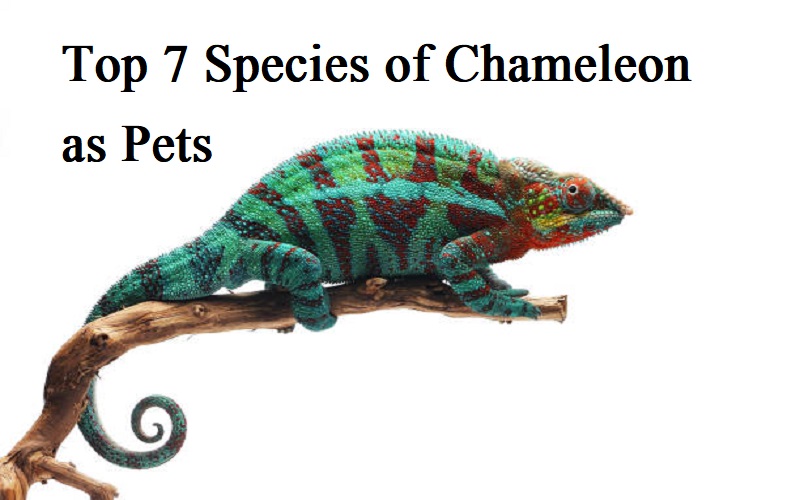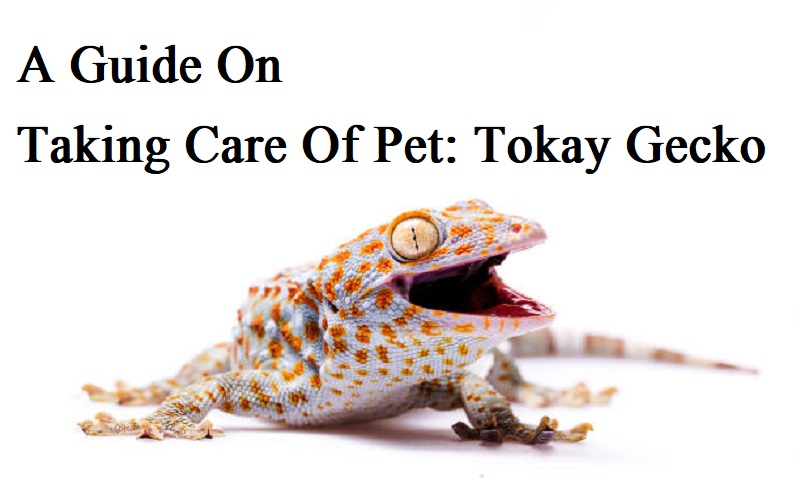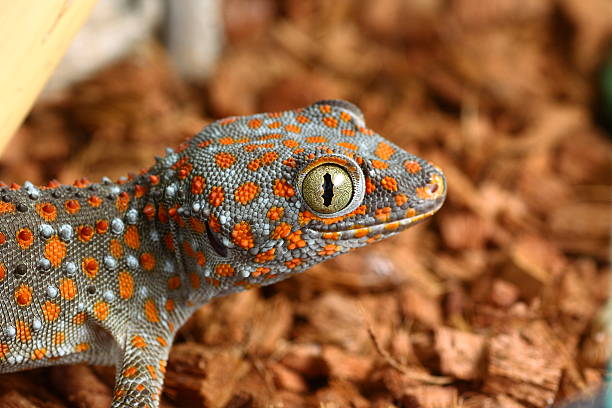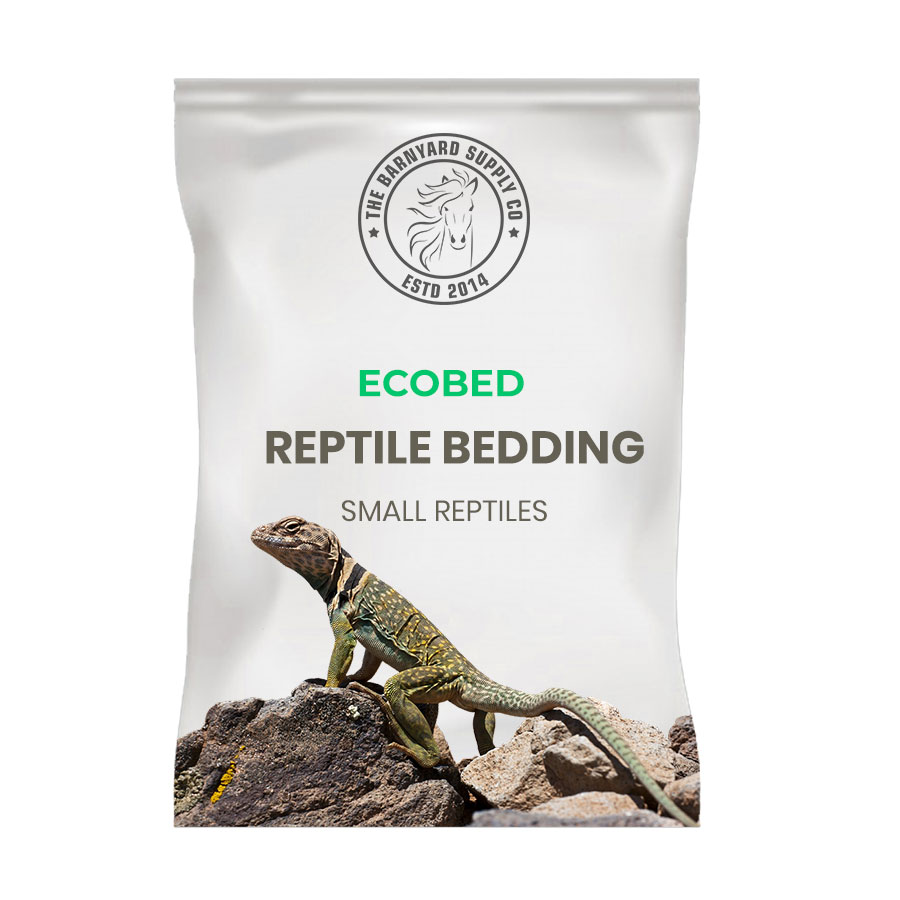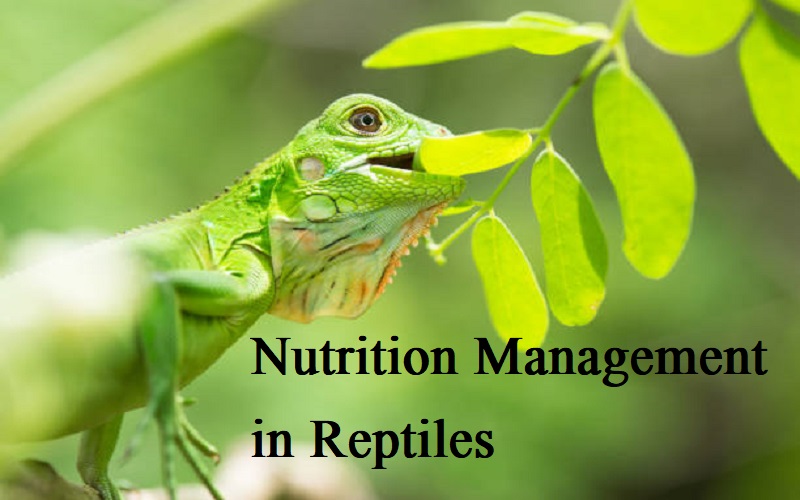If you are someone who is thinking of having a chameleon as a pet. Then you are in the right space.
There are more than 200 species of chameleons but only few can make it to be pets. We have listed the top 7 chameleons that one can own as a pet.
These 7 types of chameleons listed under are very unique and are manageable.
Let us know more about them.
1. Veiled Chameleon

Scientific name: Chamaeleo calyptratus.
If you are a beginner and looking for a chameleon pet, then go for the Veiled Chameleon. They are one among the most accepted chameleon species and can be easily maintained by the beginners. They are named veiled because of the casques they possess.
Male veiled chameleons are usually green with black,orange and yellow bands on the skin. Females are colourful with dotted looks.
Veiled chameleons grow around 12 to 24 in inches and can live upto 6 to 8 years.
Avoid any kind of lizards or other pets around these chameleons as they tend to get aggressive.
2. Jewelled Chameleon
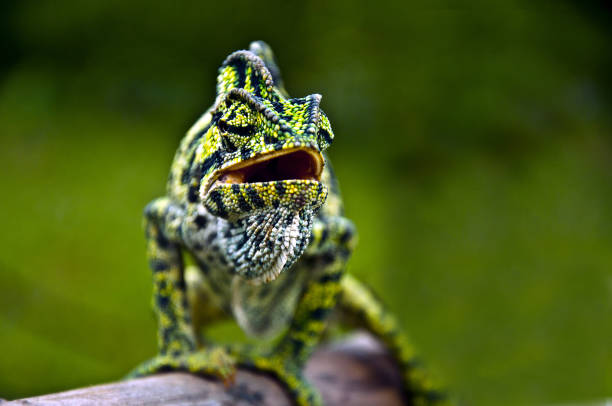
Scientific name: Furcifer campani.
Jeweled chameleons are popular for their extraordinary looks with vibrant colours on their body. They are generally green in colour with some bright coloured spots and striking stripes.
They can be grown maximum around 5 to 6 inches and the life span is 10 to 12 years.
The jewelled chameleons have the capacity of transforming their colours which is helpful during threats.
3. Pygmy Chameleon:
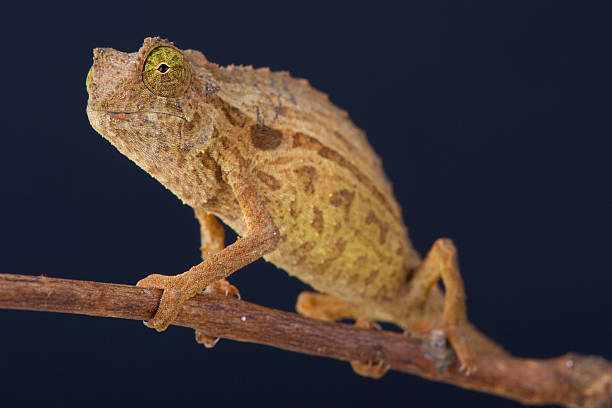
Pygmy chameleons are an exclusive type of the species in the Chamaeleonidae family. They are tiny species which grow around 3 to 4 inches.
Spectral Pygmy Chameleon:
Scientific name: Rhampholeon spectrum.
These are native to African countries and are popular pets.
They are mainly grey or black coloured with some intense stripes on the whole body.
Average size of a male Spectral Pygmy Chameleon is 3.5 to 4 and females will be around 2.5 to 4 inches.
Average life span is 3 to 5 years.
Bearded Pygmy Chameleon:
Scientific name: Rieppeleon brevicaudatus
Bearded Pygmy Chameleons are native to Northeastern Tanzania and Kenya.
They are generally tan coloured species which have the capability of changing their colour according to the environment.
Average size of the Bearded Pygmy chameleon is 3.5 inches and can be lived upto 4 to 5 years if taken good care.
4. Carpet Chameleon:
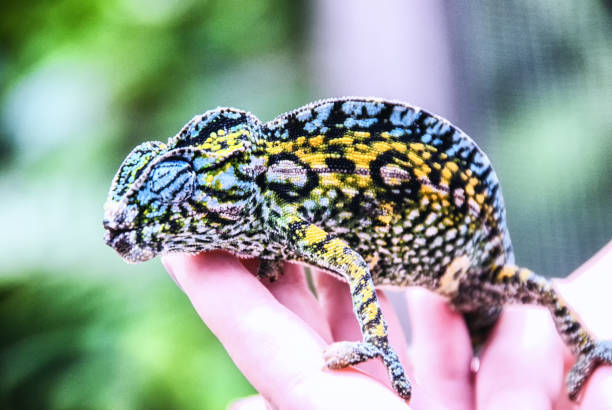
Scientific name: Furcifer lateralis
Carpet Chameleons are the most attractive and colourful chameleons. They have a very colourful detailings on their body and hence the name Carpet chameleons. They are very easy to handle and are beginner friendly.
Generally they will be green or yellow in colour. Both males and female carpet chameleons are colourful with stripes and spots on their body but the females possess some extra intense detailings.
These are mostly seen in forest environments and can also be seen in desert regions.
Average size of an adult Carpet Chameleon is 12 to 14 inches and can live upto two to three years.
5. Elliot’s Chameleon:
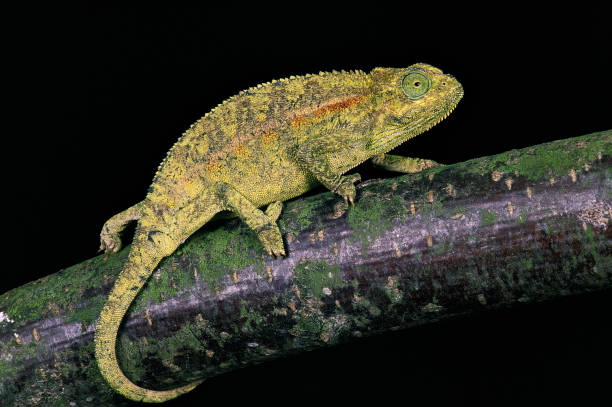
Scientific name: Trioceros ellioti
Elliot’s Chameleons are commonly known as Side- striped chameleons and Groove-throated chameleons. They are native to Eastern African countries.
These are tiny or average sized species and are generally brown, green or orange in colour.
Elliot’s chameleon grows on an average of 10 inches and can live for about 5 to 10 years if looked after properly.
It is always better to cage them separately as they are aggressive with other species.
6. Flap-Necked Chameleons:

Scientific name: Chamaeleo dilepis
Flap-necked chameleons originated from Southern Africa and are famous for their looks.
These are mostly recommended for beginners as they are very manageable in terms of their size as well as behavior.
They are mostly bright green in colour and in some cases they possess different colour patterns. They have a different look when compared to other species because of the flap on their necks, a tiny casque and a lengthy tail.
Average size of these species is 12 to 14 inches and a life span of 6 to 8 years.
7. Senegal Chameleon:
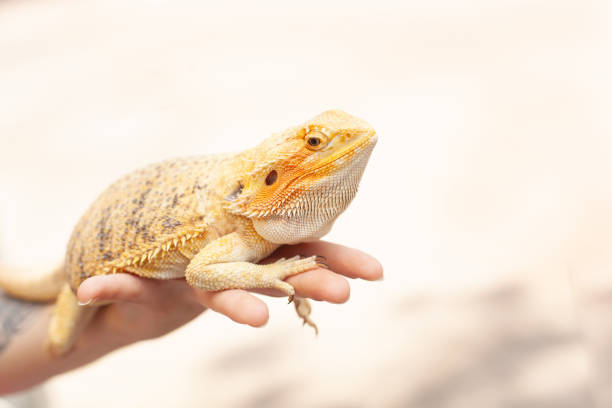
Scientific name: Chamaeleo senegalensis
They are native to West Africa and love to climb. They need ideal air ventilation and humidity.
They are generally green in colour with few spots and have a capacity to change their colours usually to blue.
Average size: 8 inches
Life span: 5 years
Conclusion:
Hope this article helped you.
Now choose your pet among these and we are sure that they make a great pet.
Happy reading and have a great time.
Do check out our recent blog

